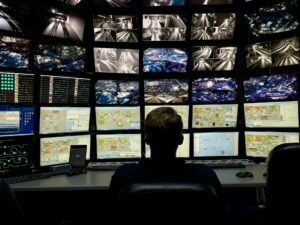Remote Work 3.0: Instruments That Bring About a New Definition of Productivity

Remote Work 3.0: Instruments That Bring About a New Definition of Productivity
The Evolution of Working Remotely
In the span of just a few years, remote work has advanced at a quick pace. The hybrid models that are enabled by collaboration platforms (Remote Work 2.0) are the result of the evolution of Remote Work 1.0, which had its start as a need during worldwide lockdowns. As of 2025, the landscape has entered Remote Work 3.0, which is a stage that is characterized by the use of cutting-edge instruments, artificial intelligence, immersive communication, and more intelligent workflows. These technologies are transforming the way that dispersed teams approach productivity.
Remote Work 3.0: A Definition
The concept of “Remote Work 3.0” goes beyond just working from home; it entails the establishment of digital-first ecosystems in which collaboration, productivity, and creativity are able to flourish regardless of where the participants are physically located. It places a strong emphasis on the importance of continuous connection, data-driven decision-making, and well-being, all of which are backed by technology that are meant to make working remotely seem as natural as working in the office.
Productivity platforms that are powered by artificial intelligence
Artificial intelligence is the core component of this next era of development. These days, smart assistants are capable of doing things like as scheduling meetings, summarizing talks, and even composing emails or reports. Analytics that are powered by artificial intelligence monitor team performance, emphasize bottlenecks, and provide suggestions for changes. Employees spend less time on repetitive activities and more time on strategic, creative work when they use these technologies.
Hubs for Virtual Collaboration
Rather of handling numerous applications at the same time, businesses are making the transition to integrated collaboration hubs. These systems incorporate features like as chat, video calls, project management, file sharing, and analytics into a unified environment. The end result is a process that is simplified, allowing teams to discuss ideas, develop plans, and carry out those plans without the need to move between applications on a regular basis.
Meetings that are both holographic and immersive
Flat displays are no longer the only option for remote meetings, as new technologies are emerging. Colleagues are able to experience a sense of presence inside shared virtual surroundings thanks to immersive virtual reality (VR) and augmented reality (AR) workplaces, as well as holographic communication. By providing teams with the ability to engage with three-dimensional models, have workshops, and work together in ways that resemble face-to-face contact, the platform reduces “Zoom fatigue” and increases participation.
Project management tools that are intelligent
Project management is beginning to take a proactive approach rather than a reactive one. Nowadays, tools make use of predictive analytics to detect potential delays, allocate resources in a dynamic manner, and adjust to changing priorities. Without micromanaging, projects may be kept on schedule with the use of automated reminders, dashboards that are updated in real time, and integrated time-tracking.
Tools for Concentration and Well-Being
In Remote Work 3.0, increased productivity also entails the development of more healthful work practices. Digital wellness solutions track the amount of time spent on screens, promote breaks, and provide staff with guidance on how to practice mindfulness or ergonomic exercises. These platforms make certain that productivity is not accomplished at the price of mental and physical well-being.
Workflows That Are Based on the Cloud
Cloud infrastructure continues to be the foundation upon which remote productivity is built. It is possible to access documents, code, and creative ideas from any location thanks to programs that are cloud-native. In addition, important information about the firm is guaranteed to be safe, even when employees are working entirely from home, thanks to improved security and compliance solutions.
Cybersecurity and Zero-Trust Systems
As the number of people who work from home increases, so do the chances of a cybersecurity breach. In order to defend digital workplaces, Remote Work 3.0 depends on zero-trust security models, biometric authentication, and artificial intelligence-driven threat detection. While ensuring that workers have the ability to work from any location, these solutions also ensure that enterprises are kept safe and secure.
Platforms for the Exchange of Information
Businesses are making investments in more intelligent knowledge management instruments. Employees are able to swiftly locate the information that they want thanks to databases that can be searched, knowledge bases that are curated by artificial intelligence (AI), and automated documentation. This lessens the reliance on emails or the need for continuous back-and-forth contact.
Automation of Workflow
The use of automation technologies has made it possible to connect disparate systems, which has eliminated the need to do repetitious operations such as data input, report preparation, or invoice processing. Employees are able to concentrate on higher-value activities that demand creativity and critical thinking when physical labor is reduced.
Platforms that are tailored to the individual student’s learning style
A focus on persistent development is a fundamental theme of Remote Work 3.0. Based on an employee’s objectives for their career and their performance, learning platforms that are powered by artificial intelligence (AI) provide recommendations for training programs, chances for mentoring, and courses that may help them improve their skills. This customisation guarantees that professional growth becomes an integral aspect of daily job activities.
Advantages of Working Remotely 3.0
- Greater freedom and autonomy for those who are employed by the organization
- Use of artificial intelligence and automation to improve overall efficiency
- More immersive technologies that promote more engaging communication
- Greater emphasis on maintaining a healthy lifestyle and achieving a balance between work and personal life
- Data-driven insights for more intelligent decision-making
Difficulties That Lie Ahead
Remote Work 3.0, despite its potential, is confronted with obstacles that include uneven access to new technologies, digital weariness resulting from continuous connection, and the possibility of an excessive dependence on artificial intelligence. It is necessary for organizations to achieve a balance between activities that are human-centered and those that are innovative.
The Future of Employment
It is probable that by the year 2030, remote work will be the norm in a number of sectors, with physical offices functioning mostly as collaboration hubs rather than as everyday workplaces for employees. The foundation for a future in which productivity, creativity, and flexibility may coexist without any difficulty is being laid by the instruments that are being produced at the present time.
Remote Work 3.0 is a revolutionary period in which technology not only provides support for working remotely, but also redefines what it means to work from home. Businesses and their workers have the ability to achieve better levels of productivity while at the same time preserving balance and engagement. This may be accomplished by merging AI, automation, immersive communication, and wellness-driven platforms. Working remotely is not the only aspect of the future of work; it will be more connected, healthier, and smarter than it has ever been before.




